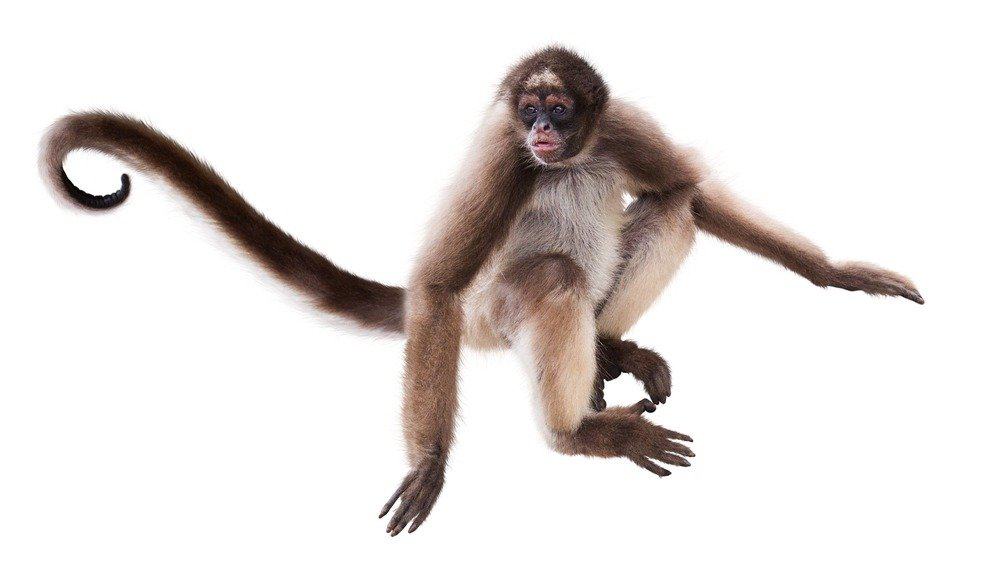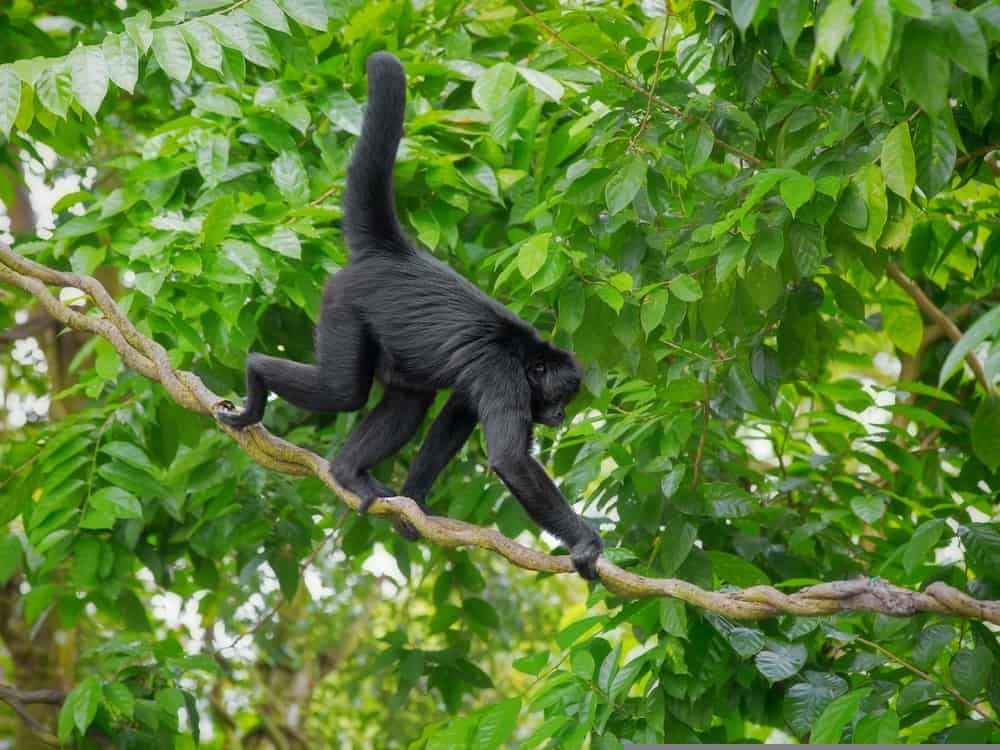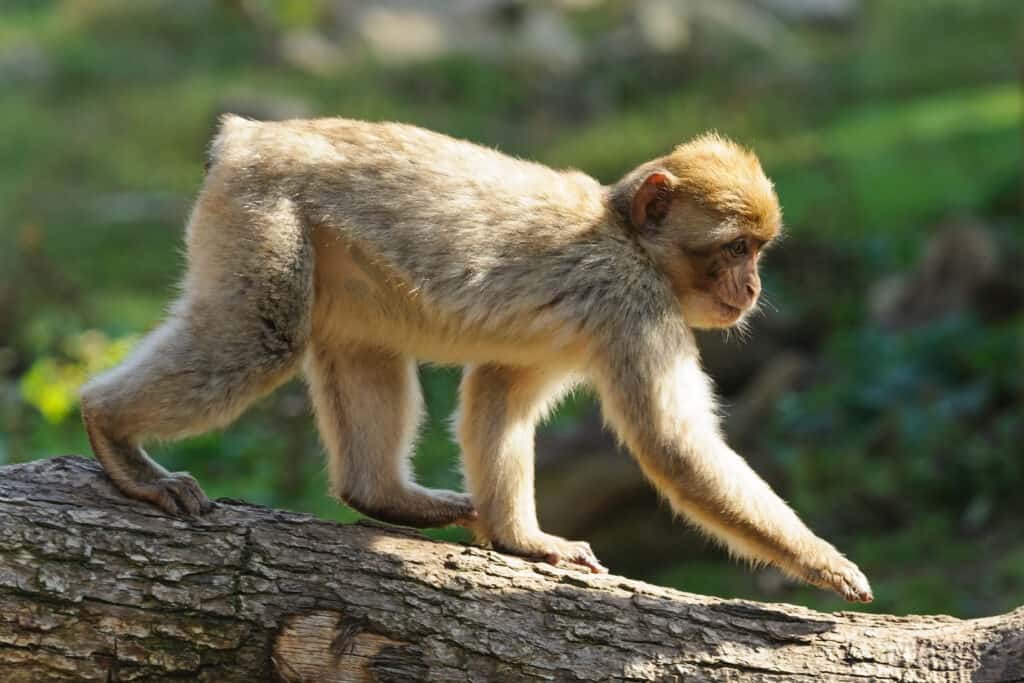Monkey tails come in all shapes and sizes but have some commonalities. For one, they are all powerful and flexible. They can also be prehensile, meaning they can grip and hold onto things. This ability explains why many monkeys can swing from tree to tree with such agility.
So, what do monkey tails do precisely? Well, they help the monkey with balance and agility when climbing trees and swinging from branch to branch. They also give the monkey an extra “hand” to grasp objects. Also, they use their tails to communicate, often conveying different emotions depending on how they hold or move their tails.

BearFotos/Shutterstock.com
Old World Monkeys vs. New World Monkeys Tails
Did you know that while old world monkeys and new world monkeys both have tails, there are some critical differences between the two? So, let’s look at the tails of these two types of monkeys.
Old-world monkeys live in Africa and Asia. In contrast, new-world monkeys inhabit vast tracts of land in Central America and South America. One of the primary differences between these two types of primates is the length of their tails. Old-world primates tend to have much shorter tails, while new-world monkeys have longer ones.
Another difference between the old-world and new-world primates is the way they use their tails. Old-world monkeys use theirs for balance, while new-world monkeys wrap theirs around branches or carry food. So, in a nutshell, most new-world monkeys have prehensile tails while old-world monkeys do not.
Tail Strength

Danita Delimont/Shutterstock.com
Monkey tails are not just for show – they are incredibly strong. In fact, a monkey’s tail is composed mainly of muscle. While monkey tails vary in strength, they are generally strong enough to support their entire body weight. In addition to the strong tail muscles, many monkeys have a tactile or friction pad (a patch of bare rough skin) on their tails. This friction pad gives them a firm grasp on tree branches, making it easy to swing among the treetops.
Black Spider Monkeys Have the Longest Tails

Kjersti Joergensen/Shutterstock.com
The black spider monkey inhabits the Atlantic Forest ecoregion of south-eastern Brazil, eastern Paraguay, northeastern Argentina, and northern Uruguay. It has the longest tail of any monkey, measuring up to 32 inches long. In addition, the head and body of the black spider monkey are typically between 20 and 24 inches long. Add the body and tail measurement, which is longer than the body by eight to 12 inches, and this is a long stretch of a monkey.
Not only is the tail long, but it is very flexible. Spider monkeys are an arboreal species, meaning they spend all their time in trees. Their tails are used as a 5th limb, often holding food and maintaining balance.
Barbary Macaque – Monkey with No Tail

Natalia Paklina/Shutterstock.com
Some monkey species have tails so long that they measure more than double their body length. But are you aware that not all monkeys have tails? That’s right! Several monkey species are tailless. The most notable of these is the Barbary Macaque.
This tailless monkey is native to the Atlas Mountains in northwest Africa and is one of the best-known old-world monkeys.
So why does the Barbary Macaque lack a tail? One theory is that it is an adaptation to the cold, mountainous environment where it lives. A tail would provide little insulation in this climate, so evolution may have done away with it over time through natural selection. Quite simply, it didn’t need it. Another possibility is that the Barbary Macaque’s tail never developed in the first place.
South American Titi

David / flickr – License
The South American titi monkey is a small new world monkey that weighs around 1kg. They live in countries like Brazil, Peru, Bolivia, and Colombia. The males and females of this species are similar in size and appearance. They have grey or brown fur, and their tails are long in comparison to their body length. In fact, their tails are about one-third the length of their entire body, including their head.
While the tails of South American titi monkeys are not prehensile, they are still crucial for bonding. Male and female South American titi monkeys often intertwine their tails while bonding. Their long tails can quickly wrap them around each other while cuddling, playing, or sleeping. Titi monkeys are monogamous and can mate for many years exclusively.
Pig-Tailed Langur
The pig-tailed langur is a type of monkey in parts of Southeast Asia. What sets this langur apart from others is its tail. The pig-tailed langur’s tail is much shorter than its body – only six inches long. In addition, its tail is primarily hairless and remains in an upright position. This feature gives the pig-tailed langur a distinctive appearance, leading to its name.
Pig-tailed langurs are fascinating creatures. They are good swimmers, and while they spend most of their time in the trees, they also go to ground level to forage for food. Pig-tailed langurs are herbivores whose diet consists mainly of fruits, leaves, and flowers.
The pig-tailed langur is an endangered species. Experts estimate that only around 2,000 of these animals remain in the wild. The main threat to the pig-tailed langur is deforestation. As people continue to destroy the habitat of these pig-tailed langurs, they lose their homes and cannot find enough food to survive. Therefore, trying to protect their habitat and ensure that these animals do not become extinct is essential.
The post Monkey Tails: Monkey Tail Business appeared first on AZ Animals.
from Animal News, Facts, Rankings, and More! - AZ Animals https://ift.tt/9Gy7hA4